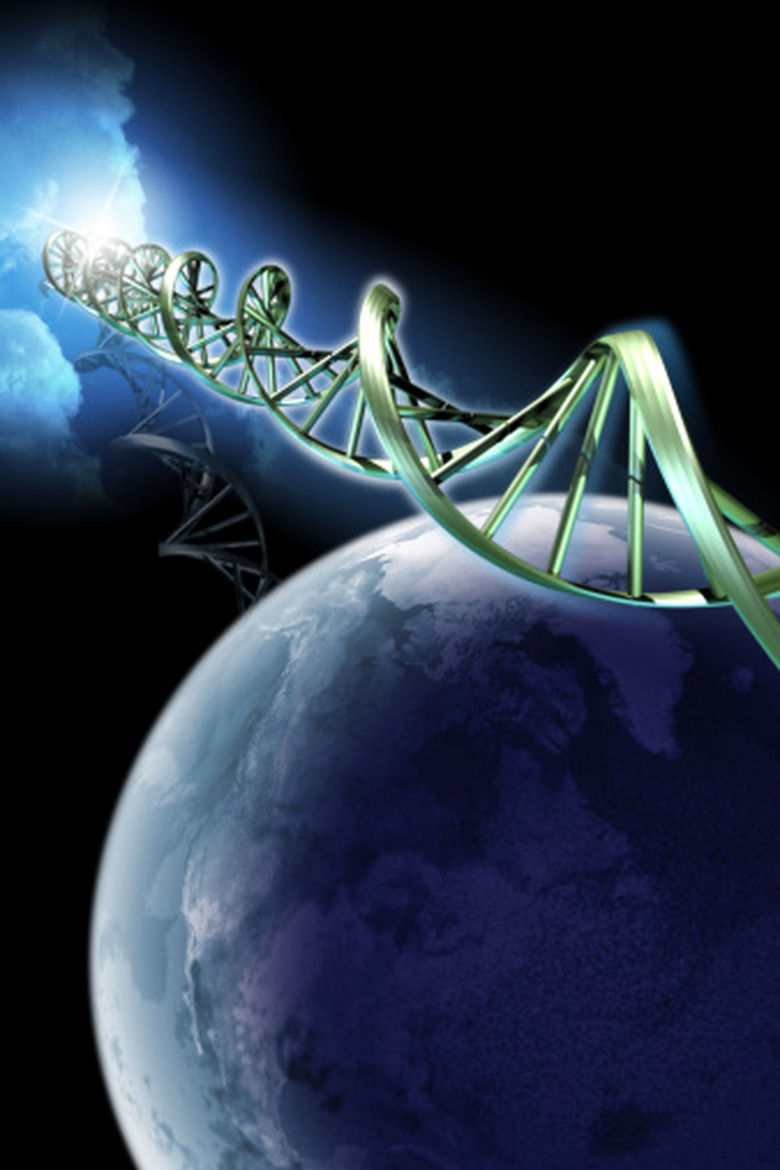What Three Organelles Have DNA?
The three organelles that contain DNA are the nucleus, mitochondria and chloroplasts. Organelles are membrane-bound subunits within a cell — analogous to organs in the body — that perform specific functions. The nucleus is the control center of the cell, and houses genetic information. The mitochondria and chloroplasts both produce energy, in animal and plant cells, respectively.
TL;DR (Too Long; Didn't Read)
Three organelles contain DNA: the nucleus, mitochondria and chloroplasts.
The DNA Molecule
The DNA Molecule
A molecule of deoxyribonucleic acid (DNA) consists of a long series of sugar nucleotides strung together in a double helix along a phosphate base. There are four different nucleotides: adenine, guanine, cytosine and thymine. The order in which these nucleotides occur along the DNA strand creates a complex code responsible for the production and regulation of different proteins. Proteins form the substance and determine the type and function of each cell, and all cells collectively determine the type and function of the organism as a whole. DNA therefore contains the genetic information responsible for all life.
The Nucleus
The Nucleus
The nucleus is the command center of the cell. It houses all genetic information — inherited from both parents in organisms that reproduce sexually — in long DNA strands called chromatids. This genetic information is expressed through the production of ribosomes, small organelles that produce specific proteins. Ribosomes and proteins move out of the nucleus along a structure called the endoplasmic reticulum, which distributes them throughout the cell.
Plant Chloroplasts
Plant Chloroplasts
The chloroplasts of a plant cell use chlorophyll to convert sunlight into energy the plant can use. In this process, known as photosynthesis, the green chlorophyll absorbs energy from sunlight, and this energy is used to convert carbon dioxide and water into carbohydrates. These carbohydrates are then converted, through cellular respiration, into ATP, which is the energy source for all living things. Chloroplast DNA codes for catalytic proteins called enzymes that are necessary to the photosynthetic process.
Mitochondrial DNA
Mitochondrial DNA
The mitochondria in an animal cell are also responsible for energy production. Mitochondrial DNA provides instructions for producing enzymes necessary for the process of oxidative phosphorylation. This process uses oxygen and simple sugars obtained from food to produce ATP. An interesting aspect of mitochondrial DNA is that, unlike nuclear DNA, mitochondrial DNA is inherited entirely from the mother. Mitochondrial DNA can be used to trace an individual's ancestral line back to its prehistoric place of origin.
Cite This Article
MLA
Samson, David. "What Three Organelles Have DNA?" sciencing.com, https://www.sciencing.com/three-organelles-dna-8626889/. 7 August 2018.
APA
Samson, David. (2018, August 7). What Three Organelles Have DNA?. sciencing.com. Retrieved from https://www.sciencing.com/three-organelles-dna-8626889/
Chicago
Samson, David. What Three Organelles Have DNA? last modified August 30, 2022. https://www.sciencing.com/three-organelles-dna-8626889/
